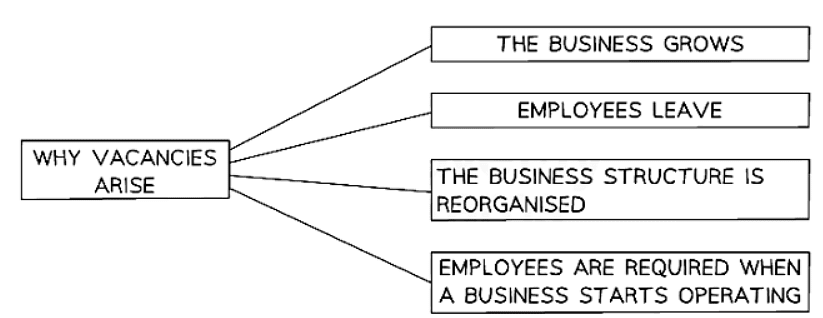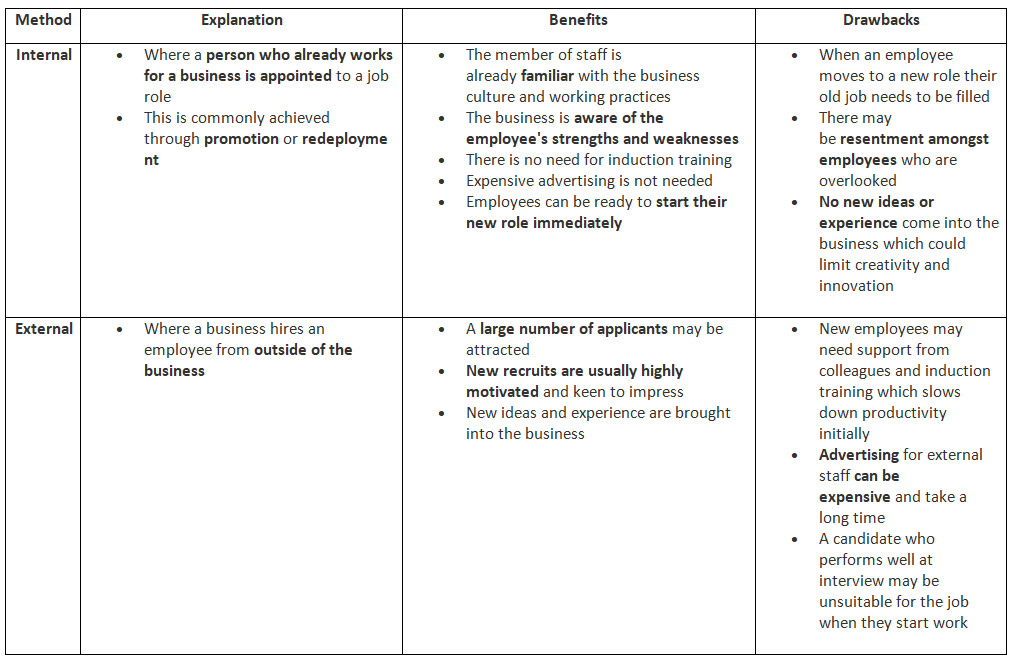Class 10 Exam > Class 10 Notes > Business Studies for GCSE/IGCSE > Recruitment Methods
Recruitment Methods | Business Studies for GCSE/IGCSE - Class 10 PDF Download
An Introduction to Recruitment and Selection
- Recruitment encompasses the process of alluring and identifying potential job candidates for specific job roles. It involves various activities like advertising job vacancies, organizing job fairs, utilizing social media platforms, and seeking recommendations from current employees.
- The primary objective of recruitment is to establish a diverse pool of competent candidates eligible for the vacant positions within the organization.
- Selection, on the other hand, involves the process of evaluating applications received and choosing the most suitable candidate for the job role. The ultimate aim of selection is to hire the most fitting individual for the position.
- When a job vacancy emerges within a business, the recruitment and selection process for new employees is initiated to fill the gap with the most qualified and suitable candidate.
Reasons for Vacancies

Reasons for Hiring New Employees
- During periods of business growth, more employees are needed as the business expands its operations.
- Example: A software company experiencing rapid expansion may require more developers and support staff to meet increasing customer demands.
- When an employee leaves their job and needs replacing.
- Example: If a senior manager resigns, the company will need to find a suitable replacement to fill the vacant position.
- Businesses often reorganize their organizational structure, which may result in the need for additional staff.
- Example: A company merging with another may need to hire extra employees to manage the expanded scope of work.
- A new business start-up needs to recruit workers for the first time.
- Example: A tech startup hiring software engineers, designers, and marketing professionals to launch their product.
- Businesses can choose to use a recruitment agency to carry out the recruitment and selection process on their behalf.
- New employees may be found quickly from its pool of available talent.
- Example: An IT firm utilizing a recruitment agency to quickly onboard skilled programmers from a talent pool.
- Management time can be saved.
- Example: By outsourcing recruitment to an agency, company executives can focus on core business operations.
- Recruitment agencies usually charge a finding fee for their specialist services.
Question for Recruitment MethodsTry yourself: What is the primary objective of recruitment?View Solution
Internal and External Recruitment
- Internal recruitment involves the promotion or redeployment of employees already working within the company.
- External recruitment involves the appointment of new employees from outside the organization.
Benefits and Drawbacks of Internal and External Recruitment

The document Recruitment Methods | Business Studies for GCSE/IGCSE - Class 10 is a part of the Class 10 Course Business Studies for GCSE/IGCSE.
All you need of Class 10 at this link: Class 10
|
70 videos|93 docs|26 tests
|
FAQs on Recruitment Methods - Business Studies for GCSE/IGCSE - Class 10
| 1. What is the difference between internal and external recruitment? |  |
Ans. Internal recruitment refers to the process of filling job vacancies from within the existing workforce, while external recruitment involves hiring individuals from outside the organization.
| 2. What are some common recruitment methods used by companies? |  |
Ans. Some common recruitment methods include job postings, employee referrals, recruitment agencies, career fairs, and social media recruiting.
| 3. How important is the recruitment and selection process for a company? |  |
Ans. The recruitment and selection process is crucial for a company as it directly impacts the organization's ability to attract and retain top talent, which ultimately influences its overall success and performance.
| 4. What are some factors to consider when selecting candidates for a job? |  |
Ans. Some factors to consider when selecting candidates for a job include their qualifications, experience, skills, cultural fit, and potential for growth within the organization.
| 5. How can companies ensure a fair and unbiased recruitment and selection process? |  |
Ans. Companies can ensure a fair and unbiased recruitment and selection process by implementing policies and procedures that promote diversity and inclusion, conducting structured interviews, using objective criteria for evaluation, and providing equal opportunities for all candidates.
Related Searches















